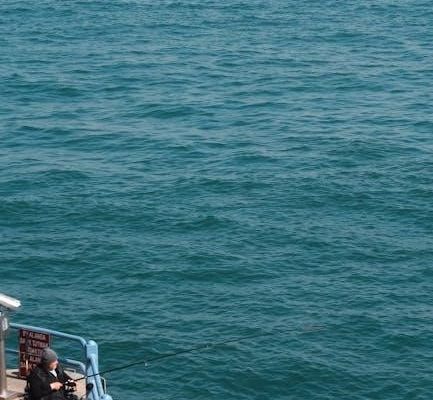Fishing pole length plays a crucial role in determining angling success, affecting balance, control, and overall fishing performance, making it essential to choose the right size for optimal results․
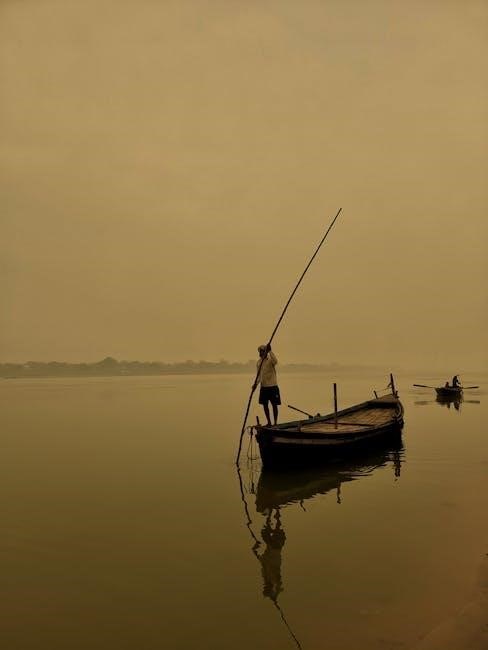
Why Pole Length Matters
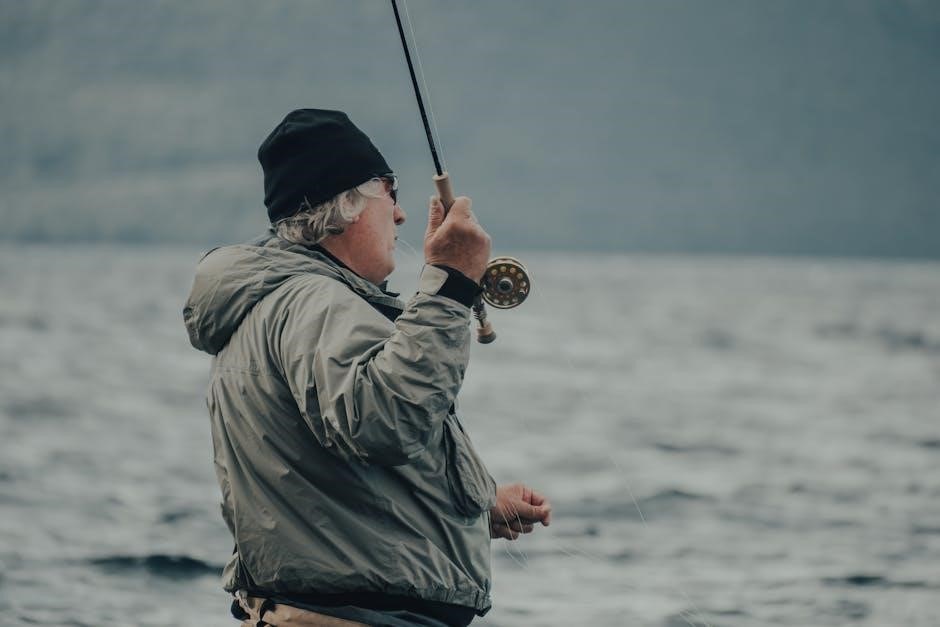
Fishing pole length significantly impacts performance, affecting casting, retrieval, and overall angler experience, making it a critical factor in achieving successful and enjoyable fishing outcomes․
2․1․ Balance and Control
The length of a fishing pole directly impacts balance and control․ A pole that is too long may be cumbersome, while one that is too short can lack leverage․ Proper length ensures stability, allowing anglers to manage the weight of the pole and fish effectively․ Longer poles often provide better control for casting and handling larger species, while shorter poles excel in tight spaces․ The right length enables precise movements and reduces fatigue during extended fishing sessions, ensuring a more enjoyable and productive experience on the water․
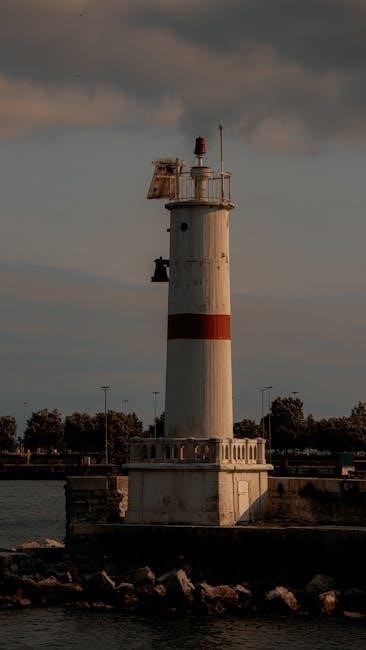
2․2․ Casting Distance and Accuracy
Fishing pole length significantly influences casting distance and accuracy․ Longer poles generally allow for greater casting distance, as they provide more leverage and energy transfer during the cast․ This makes them ideal for covering larger bodies of water or reaching distant targets․ However, shorter poles offer improved accuracy and control, especially in tight or confined fishing environments․ The optimal length strikes a balance between these factors, ensuring anglers can cast effectively while maintaining precision․ Understanding how pole length affects casting dynamics is key to selecting the right tool for specific fishing scenarios and techniques․

Types of Fishing Poles and Their Lengths
Fishing poles vary in length and design, catering to different techniques and environments․ Common types include spinning rods, baitcasting rods, fly rods, and telescopic rods, each with unique length ranges suited to their specific use․

3․1; Spinning Rods
Spinning rods are among the most popular choices for anglers due to their versatility and ease of use․ Typically ranging in length from 5 to 8 feet, these rods are ideal for freshwater fishing and targeting species like panfish, trout, and bass․ The shorter lengths provide precise control and are easier to maneuver in tight spaces, while longer rods enhance casting distance․ Spinning rods are also available in various actions, from light to heavy, catering to different fishing techniques and target sizes․ Their ergonomic design and balanced feel make them a favorite for both beginners and experienced anglers seeking reliable performance․

3․2․ Baitcasting Rods
Baitcasting rods are popular for their precision and power, typically ranging in length from 6 to 9 feet․ These rods are ideal for freshwater fishing, especially for targeting larger species like bass, walleye, and pike․ Longer rods in this range enhance casting distance and leverage, while shorter lengths offer better control in tight spaces․ Baitcasting rods are available in various actions, from medium-light to heavy, catering to different fishing techniques and target sizes․ Their design emphasizes accuracy and strength, making them a favorite among experienced anglers seeking to land larger fish with control and precision․
3․3․ Fly Fishing Rods
Fly fishing rods are known for their elegance and precision, typically ranging in length from 7 to 9 feet․ Their length is tailored to the fishing environment, with shorter rods suited for small streams and longer rods ideal for larger waters․ The rod’s action and weight are critical, as they affect casting performance and fish control․ Fly rods are often made from graphite or fiberglass, offering a balance of strength and sensitivity․ Longer rods enhance casting distance and line control, while shorter rods provide accuracy in tight spaces․ The choice depends on the target species, casting technique, and the angler’s preference for fast action or slow action rods․
3;4․ Telescopic and Travel Rods
Telescopic and travel rods are designed for portability and convenience, making them ideal for anglers on the move․ These rods collapse into a compact form, often fitting into luggage or backpacks․ While they may lack the sensitivity and durability of traditional one-piece rods, advancements in materials like graphite and fiberglass have improved their performance․ Lengths vary from 5 to 10 feet, catering to different fishing techniques․ Travel rods are a great choice for versatility, allowing anglers to adapt to various fishing conditions without sacrificing convenience․ However, they may require more care to avoid damage during transportation․
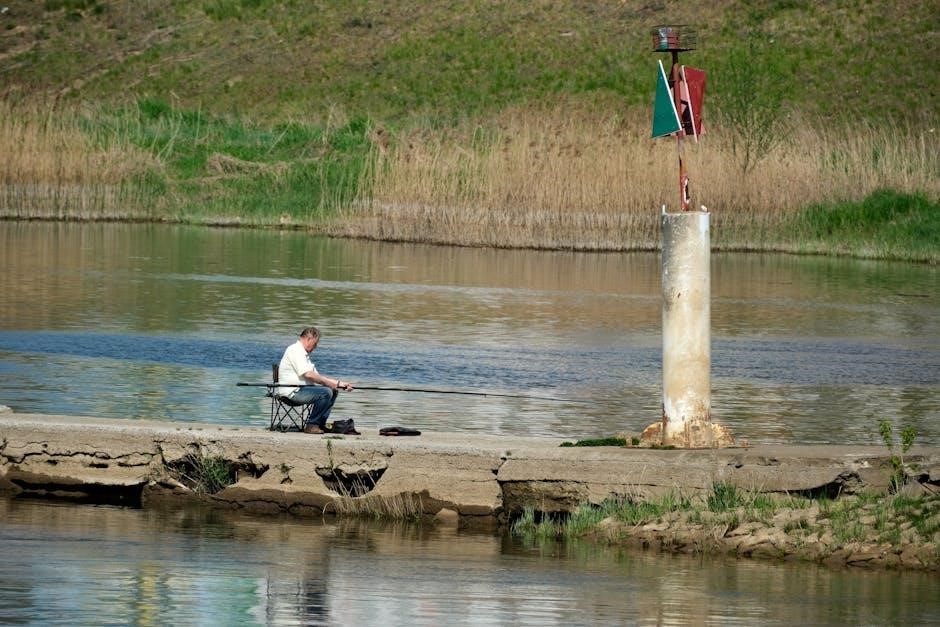
Factors Influencing Pole Length Choice
Choosing the right fishing pole length depends on fishing technique, target species, and fishing environment, ensuring optimal performance and comfort for various angling scenarios and preferences․
4․1․ Fishing Technique
The fishing technique significantly impacts the ideal pole length․ Techniques requiring precise casting accuracy and control, such as fly fishing, often benefit from shorter rods for better maneuverability․ Conversely, methods like surf casting or beach casting demand longer poles to achieve greater distance and leverage․ The action of the rod—whether it’s fast, medium, or slow—also influences the preferred length, as it affects the rod’s sensitivity and responsiveness․ Additionally, techniques like trolling or ice fishing may require specialized lengths to accommodate the unique demands of each method․ Matching the pole length to the technique ensures optimal performance and a more enjoyable fishing experience․
4․2․ Target Species
The target species greatly influences the ideal fishing pole length․ Larger, stronger fish like marlin or tuna require longer, sturdier poles for leverage and control during intense battles․ In contrast, smaller species such as trout or panfish are better suited for shorter, more sensitive rods that allow for precise presentations and delicate handling․ The fighting ability of the fish also plays a role, with powerful species necessitating longer poles to absorb their energy․ Understanding the size and behavior of the target species helps anglers select a pole length that maximizes their chances of success and ensures a balanced fishing experience․
4․3․ Fishing Environment
The fishing environment significantly impacts the choice of pole length․ In open water or ocean fishing, longer poles (8-12 feet) are often preferred for greater casting distance and reaching deeper waters․ Conversely, in tight spaces like small ponds or dense forests, shorter poles (5-7 feet) are more practical for easy maneuverability․ The presence of obstacles, such as trees or rocks, also influences the decision, as shorter poles reduce the risk of tangling or damage․ Additionally, weather conditions like strong winds may require adjusting pole length for better control․ Understanding the environment ensures anglers select a pole that enhances their fishing experience and adaptability․
How to Choose the Right Length for You
Assess your fishing needs and preferences to determine the ideal pole length․ Consider comfort, portability, and performance to make an informed decision that suits your style and goals․

5․1․ For Beginners
For those new to fishing, choosing the right pole length can seem overwhelming, but starting with a medium-length rod is ideal․ A length of 5′ to 7′ is recommended, as it offers ease of handling and maneuverability․ This range is versatile and suitable for most fishing conditions․ Beginners should opt for rods made from durable materials and feature good sensitivity to detect bites․ Additionally, consider a rod with a moderate action, which provides a balance between strength and flexibility․ Test the rod in person if possible, and prioritize comfort and portability․ For smaller or younger anglers, shorter rods may be more appropriate․ Always match the rod’s power rating to your target species to ensure a better fishing experience․ By focusing on these factors, beginners can select a rod that enhances their learning curve and overall enjoyment of fishing․
5․2․ For Experienced Anglers
Experienced anglers often tailor their rod length to specific fishing techniques and environments․ Longer rods (7’–9′) are ideal for long-distance casting and precision control, while shorter rods (5’–6′) excel in tight spaces or for heavy-duty fishing․ Seasoned anglers should consider their target species, as larger fish may require sturdier, longer rods for leverage and strength․ Customization is key; some prefer rods with fast action for sensitivity, while others opt for slow action for versatility․ Experienced anglers may also explore specialized rods, such as telescopic or travel rods, for convenience without compromising performance․ Ultimately, their choice reflects a balance of technique, environment, and personal preference․
Selecting the right fishing pole length is a critical decision that significantly impacts your fishing experience․ Whether you’re a beginner or an experienced angler, understanding how rod length influences balance, casting distance, and control is essential․ By considering factors such as your fishing technique, target species, and environment, you can choose a rod that enhances your performance․ Remember, the ideal length varies, so it’s important to experiment and find what works best for you․ With the right rod, you’ll enjoy improved accuracy, better hooksets, and a more enjoyable time on the water․ Happy fishing!
